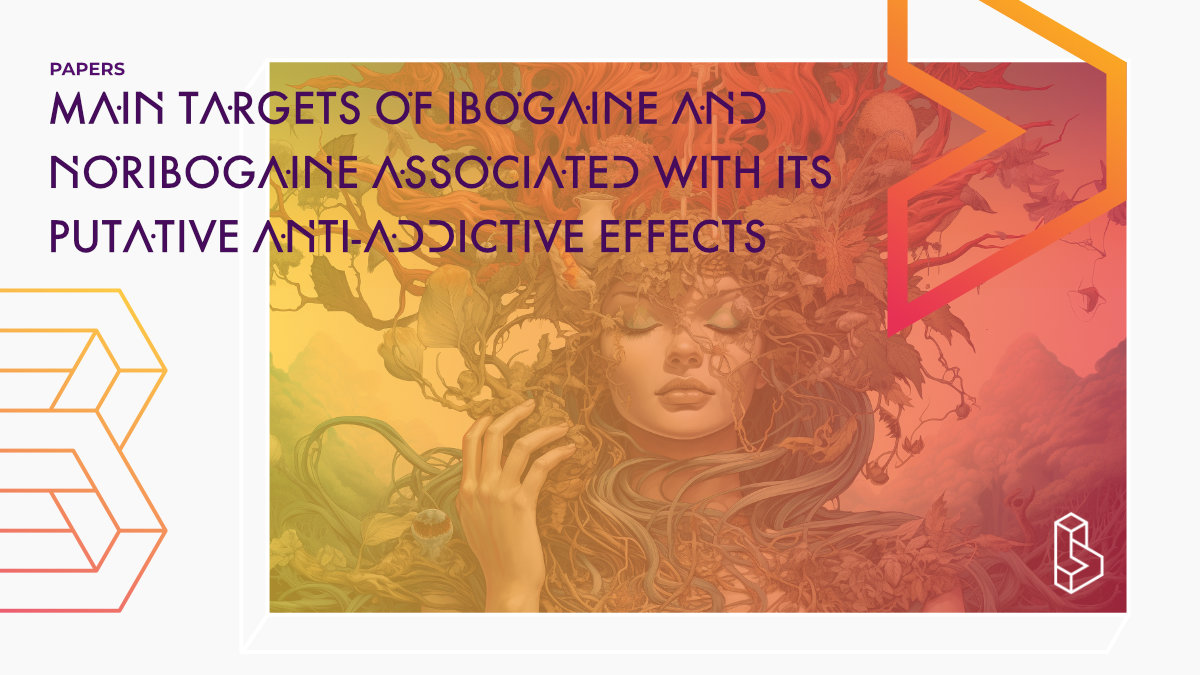This review (2023) examines ibogaine as a potential treatment for substance use disorders (SUDs). The lack of randomized, controlled studies on its safety and efficacy and the elusive mechanisms of action have been barriers to clinical use. The review suggests that ibogaine and its metabolite, noribogaine (NOR), modulate multiple targets associated with SUDs, emphasizing a complex, multi-target approach to understanding its pharmacology.
Abstract of Main targets of ibogaine and noribogaine associated with its putative anti-addictive effects: A mechanistic overview
“Background: There is a growing interest in studying ibogaine (IBO) as a potential treatment for substance use disorders (SUDs). However, its clinical use has been hindered for mainly two reasons: First, the lack of randomized, controlled studies informing about its safety and efficacy. And second, IBO’s mechanisms of action remain obscure. It has been challenging to elucidate a predominant mechanism of action responsible for its anti-addictive effects.
Objective: To describe the main targets of IBO and its main metabolite, noribogaine (NOR), in relation to their putative anti-addictive effects, reviewing the updated literature available.
Methods: A comprehensive search involving MEDLINE and Google Scholar was undertaken, selecting papers published until July 2022. The inclusion criteria were both theoretical and experimental studies about the pharmacology of IBO. Additional publications were identified in the references of the initial papers.
Results: IBO and its main metabolite, NOR, can modulate several targets associated with SUDs. Instead of identifying key targets, the action of IBO should be understood as a complex modulation of multiple receptor systems, leading to potential synergies. The elucidation of IBO’s pharmacology could be enhanced through the application of methodologies rooted in the polypharmacology paradigm. Such approaches possess the capability to describe multifaceted patterns within multi-target drugs.
Conclusion: IBO displays complex effects through multiple targets. The information detailed here should guide future research on both mechanistic and therapeutic studies.”
Authors: Genís Ona, Ingrid Reverte, Giordano N. Rossi, Rafael G. Dos Santos, Jaime E. C. Hallak, Maria T. Colomina & José C. Bouso
Summary of Main targets of ibogaine and noribogaine associated with its putative anti-addictive effects: A mechanistic overview
Introduction
Ibogaine, the main alkaloid of the shrub Tabernanthe iboga, is gaining recognition as a potential treatment for Substance Use Disorders. Preclinical research supports its effectiveness in reducing drug self-administration and decreasing the likelihood of drug relapse.
IBO has a half-life of 2–5 h in healthy volunteers and a half-life of 7.45 h in heroin users. Its active metabolite noribogaine has a longer half-life than IBO and may be implicated in its anti-addictive effects.
Find this paper
https://doi.org/10.1177/02698811231200882
Paywall | Google Scholar | Backup | 🕊
Cite this paper (APA)
Ona, G., Reverte, I., Rossi, G. N., Dos Santos, R. G., Hallak, J. E., Colomina, M. T., & Bouso, J. C. (2023). Main targets of ibogaine and noribogaine associated with its putative anti-addictive effects: A mechanistic overview. Journal of Psychopharmacology, 02698811231200882.
Study details
Compounds studied
Ibogaine
Topics studied
Opioid Use Disorder
Addiction
Study characteristics
Literature Review

